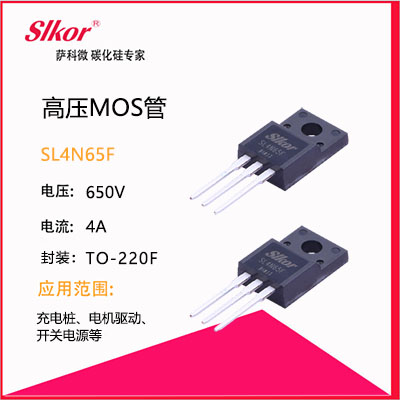Functional difference between
MOS transistor and triodeMOS transistor and triode? What is the functional difference between the two components? These two components can be regarded as a basic unit and an independent device. Even if the shell is taken apart, the naked eye can't see any difference. It's confusing to understand from the working principle.
If you touch the G-pole (grid) and the positive power pole of the MOS tube with your hand at the same time, the LED lamp will emit light, and it will continue to emit light even if you release your hand. As for why this happens, it can be simply understood that when the potential of G pole rises, a conductive channel (source) will be formed between D pole (drain) and S pole, which is equivalent to a wire.
When conducting, the voltage drop between D pole and S pole can also be measured and calculated by multimeter, and the voltage drop is close to 0V.
If you touch the G pole and the negative pole of the power supply with your hands at the same time, the LED lights will go out. The reason is that the channel is cut off, which is just the opposite of when it is turned on.
If MOS transistor is replaced by triode phenomenon, will it still be like this? The schematic diagram of the replacement is the circuit on the right side of the figure below. Actually, when the triode is replaced, touching the base of the triode and the positive pole of the power supply (equivalent to the grid of MOS tube and the positive pole of the power supply) will turn on this LED lamp, but it will turn off immediately after releasing the hand.
Why is it different from using MOS tube? Let's recall the situation when the triode works in the amplification state: the emitter junction is forward biased and the collector junction is reverse biased.
If you touch the base and the anode of the power supply with your hands at the same time, and both conditions are met, then the triode will be turned on and the LED light will be on. If the hand is turned off at this time, the reverse bias of the collector junction is still satisfied, but the forward bias of the emitter junction is not enough, so the triode will be cut off, and the external performance is that the LED lamp will go out. From this, we can also feel that MOS tubes are indeed easier to use than triodes. It is true that MOS tubes have many advantages compared with triodes, such as:
1.MOS transistors are voltage-controlled devices and triodes are current-controlled devices, so MOS transistors are more energy-efficient.
2. Only majority carrier participates in the conduction of MOS tube, and both majority carrier and minority carrier of triode participate in the conduction, so the thermal stability of MOS tube is better.
3. The flexibility of 3.MOS tube is better than that of triode tube
4.MOS tube is easier to integrate technically.
5. When the 5.MOS transistor is turned on, the conduction voltage drop is small (close to 0 V, while the triode works in an amplification state greater than 0.3V). Other differences between MOS transistor and triode
1. Working characteristics: current-controlled triode and voltage-controlled MOS tube.
2. Cost: Triode is cheap, but MOS tube is expensive.
3. Power consumption: triode loss is large and MOS tube is small.
4. Driving ability: mos tubes are commonly used in high-current power switches and local switching circuits.
Company Tel: +86-0755-83044319
Fax/fax:+86-0755-83975897
Email: 1615456225@qq.com
QQ: 3518641314 Manager Li
QQ: 332496225 Manager Qiu
Address: Room 809, Block C, Zhantao Technology Building, No.1079 Minzhi Avenue, Longhua New District, Shenzhen









